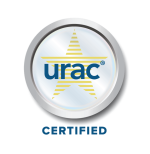According to the Centers for Disease Control and Prevention (CDC), smoking is still the leading cause of preventable disease, disability and death in the U.S.. As smoking has been consistently linked to a myriad of health conditions such as cancer, cardiovascular and respiratory conditions, successful smoking cessation remains crucial for improving one’s health and reducing the risk of disease.
Related article: Tobacco Smoking and Hypertension
Facts about smoking cessation in the U.S.
According to the CDC, in 2018, 55.1% of adult smokers made an attempt to quit over the previous year but only 7.5% were successful. Approximately four in ten adult smokers who saw a health professional did not receive advice on quitting smoking, although it was found that even briefly giving advice to quit (< 3 minutes) significantly improves cessation rates. In addition, only one-third of adult smokers used counseling or medication when trying to quit smoking. These data may help to explain the low success rates of smoking cessation.
Steps to quit smoking
Quitting smoking successfully requires a concrete plan. Basic steps to follow would include writing down reasons for quitting and the anticipated benefits, making the decision to quit, setting a quit date, and then building a quit plan to help ensure the commitment to quitting. Additional strategies for quitting entails getting support (either from friends, family, or health providers), keeping yourself busy, and avoiding triggers, especially secondhand smoke. Behavioral approaches or medications/nicotine replacement therapy may also help alleviate withdrawal symptoms.
Dealing with withdrawal symptoms
Withdrawal symptoms vary from person to person. These symptoms can start at around 4 to 24 hours after quitting and peak on the 3rd day, then gradually taper off over 3-4 weeks. There are 7 main symptoms associated with nicotine withdrawal: irritability/anger/frustration, anxiety, depressed mood, difficulty concentrating, increased appetite, insomnia, and restlessness. Other possible symptoms are constipation, dizziness, nightmares, nausea, and sore throat.
The following are some practical tips for dealing with withdrawal symptoms:
- Urges/cravings to smoke – Cravings usually don’t last too long and become less frequent over time. Avoid activities, situations, or food that you used to associate with smoking. Keep your mouth busy by chewing on other food or distract yourself from the cravings. Consider also medications or nicotine replacement products.
- Irritability/anger – Reduce caffeine intake and engage in more physical activity. Try meditation or relaxation techniques or relaxing activities such as getting a massage.
- Restlessness/difficulty concentrating – Do some physical activity. Cut down on caffeine. Try to limit activities that require a lot of focus or concentration during the first few days after quitting.
- Insomnia – Avoid caffeine intake in the late afternoon or evening. Reduce screen time during the night and ensure the room is quiet, dark and cool. Avoid heavy meals or alcohol intake right before bed.
- Hunger/weight gain – Be active and exercise regularly. Focus on eating and do it slowly. For snacks, eat healthy low-calorie foods. Some medicines can also be prescribed by doctors, which can blunt the anticipated weight gain.
- Anxiety/depression – Those who have a history of psychiatric illness can be more prone to intense feelings of anxiety and depression. Increasing physical activity, spending time with friends or family for support, or behavioral therapy can be helpful. Persistent symptoms may be managed by several medications or nicotine replacement products.
Related article: What Happens When You Quit Smoking?
How remote patient monitoring can help in smoking cessation
Remote patient monitoring (RPM) can be useful for patients with multiple medical conditions who desire to quit smoking. Early signs of withdrawal symptoms can be more easily detected such as heart rate and blood pressure changes. Additionally, since some of the signs of withdrawal syndrome are nonspecific, RPM will be helpful for evaluating whether these signs and symptoms are due to withdrawal symptoms or to the underlying medical condition. This can lead to less complications and more successful smoking cessation.
Takeaway
Recognizing and managing withdrawal symptoms effectively after quitting smoking is essential for successful smoking cessation. A concrete quit plan, good social support, effective coping behaviors, nicotine replacement therapy and remote patient monitoring, are all helpful in dealing with withdrawal symptoms.
References:
1. https://www.cdc.gov/tobacco/php/data-statistics/smoking-cessation/
3. https://www.ncbi.nlm.nih.gov/pmc/articles/PMC4542051/
4. https://www.cdc.gov/tobacco/features/quitlines/
5. https://smokefree.gov/build-your-quit-plan
6. https://www.cancer.gov/about-cancer/causes-prevention/risk/tobacco/withdrawal-fact-sheet#what-can-i-do-about-anger-frustration-and-irritability









